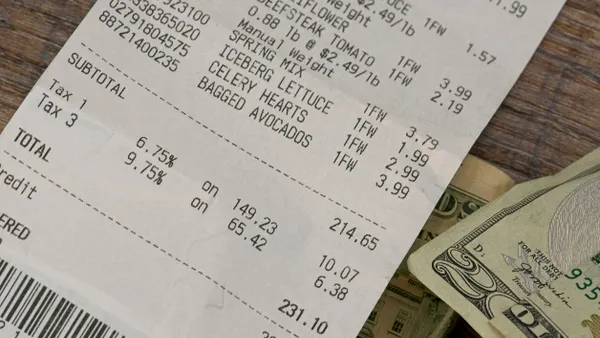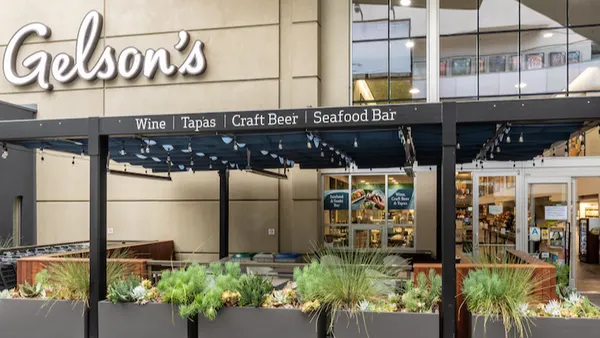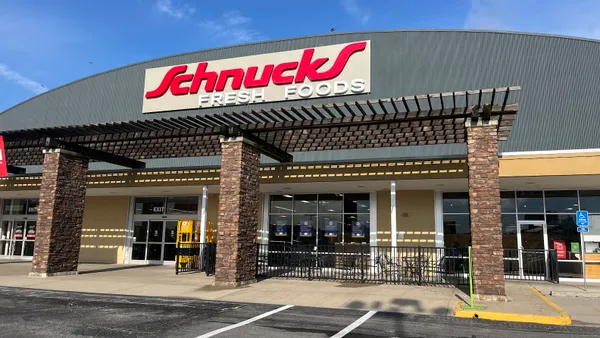Dive Brief:
- Sprouts Farmers Market reported net sales of $1.3 billion for this year’s third quarter, with strong performance from new and remodeled stores driving growth, the company noted in a release. Earnings per share was 27 cents, a 17% increase over the year-ago period.
- Same-store sales grew 1.5% in the quarter, a slowdown compared to previous quarters and reflective of a deflationary environment in perishables — particularly produce, which comprises close to a quarter of Sprouts’ sales. Gross profit for the quarter grew to 28.8%, an increase of five basis points over the year-ago period.
- Sprouts raised its full-year guidance based on earnings per share for the lower end of net sales. It also tightened its comp-store sales growth from 1.5% to 2.5% to 1.7% to 2%. “Robust new store productivity, continued product innovation and strong operations drove a double digit increase in net sales in the third quarter,” Amin Maredia, Sprouts’ chief executive officer, said in a statement.
Dive Insight:
Comparable store sales continued to slow for Sprouts in the third quarter, with its 1.5% growth contrasting consecutive 4.6% increases late last year and early this year. The deceleration, executives pointed out, is due primarily to deflation in produce — Sprouts’ biggest draw and sales leader. But inflation in this category is expected to return next year.
Sprouts has not yet issued full-year guidance for 2019, but in its Q2 earnings statement, the company projected two-year comparable store sales growth at 3.4%.
During the third quarter, Sprouts opened stores in two new states — Washington and Pennsylvania — bringing its total to 315 locations across 19 states. The company hit its goal of opening 30 stores this year and reiterated recently that it plans to open 30 more next year, with seven coming in the first quarter.
“Ninety percent of our sales are still going to come from brick and mortar, so we’re going to continue to build 30 stores per year for as long as we can,” said Ted Frumkin, Sprouts’ chief development officer, during a presentation at Groceryshop in Las Vegas this week.
In addition, Sprouts is updating its stores around an enhanced concept focused on prepared foods, fresh and healthy offerings. Frumkin said shoppers treat these stores as meal destinations and find them easier to shop than the company’s legacy stores. The average consumer spends 15 to 20 minutes inside the store, he said. New locations are incorporating this concept, and by 2020 the chain will have updated all of its stores in line with this model, Frumkin said.
In a conference call Thursday morning, CEO Amin Maredia pointed to Sprouts' continuing evolution, noting that store layouts and merchandising mix are “drastically different than three to five years ago.” The company went public five years ago.
In e-commerce, Sprouts continues to expand availability of home delivery with Instacart. The service is currently available at more than 200 stores, and Sprouts plans to bring all locations online next year. Maredia noted, as he has previously, that home delivery expands the reach of its stores from five minutes driving time to seven, and is informing the company’s real estate decisions going forward as e-commerce demand continues to rise.
Sprouts’ store growth, its recent adjustments, and the popularity of its core model with today’s shoppers bodes well for the company. But it will continue to be measured against Whole Foods, which competes in the same space and has evolved in significant ways under Amazon. And while Sprouts has said it intends to pick off shoppers from traditional grocers, some of those competitors, like Kroger, are proving to be very nimble, investing deeply in things like e-commerce projects and private label.










